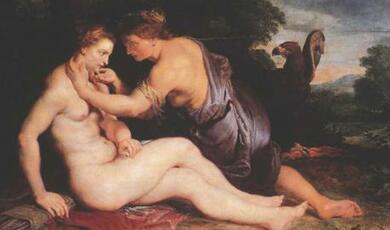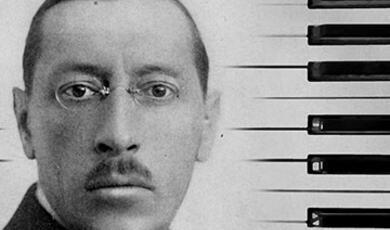Twentieth-Century Divas: Julie Andrews
Share
- Details
- Text
- Audio
- Downloads
- Extra Reading
Starring in My Fair Lady (1956), The Sound of Music (1965) and Cinderella (1957) gave Dame Julie Andrews unparalleled profile.
These were among the most successful Broadway, Hollywood and TV musicals of their time. Yet following this golden decade, she made few films and appeared in no Broadway shows during her forties and fifties, typically an artist’s most productive period.
How did she then become one of the most revered female stars of the late twentieth century?
Download Text
Twentieth-Century Divas: Julie Andrews
Dominic Broomfield-McHugh, Visiting Professor of Film and Theatre Music
2 May 2024
Is Julie Andrews a diva?
For some, it may be a surprise to see Dame Julie Andrews’s name amongst a list of divas. Certainly, she is not generally associated with some of the more pejorative definitions of the word: self-important, demanding, petulant, bossy. Yet as we have seen throughout this series, ‘diva’ can be an empowering term, used to admire. And in a clip from ‘A Spoonful of Sugar’ (Mary Poppins) that we’ll watch in the lecture, we can see Andrews in a mini-singing competition with the greatest soprano movie star of the day: herself. She and her reflection sing a short call-and-response duet, then her reflection outsings her ‘real’ self in a mini cadenza. It’s cheeky, and it calls to mind a version of the traditional operatic diva that we haven’t looked at so far, embodied in Maria Callas’s glittering, hilarious performance of Rosina’s aria from The Barber of Seville in her famous concert in Paris in 1958. To my mind, the power that Callas (the ultimate twentieth-century diva) generates through humour and cheekiness – through her coloratura singing – in this rare non-dramatic performance helpfully contextualises Andrews as a diva who uses similar strategies to present and frame her star persona.
Indeed, her high, flexible singing voice was continuously used at the centre of her appearances in the 1950s and 1960s to help show her as part of a lineage of Hollywood sopranos that also includes Jeanette Macdonald and Kathryn Grayson, both of whom would be considered divas. In her final song in the 1968 film Star!, the music and dance routine both build to showcase the high-lying vocal line. And even her most iconic moment on film, the opening of The Sound of Music, reveals a conscious strategy to frame her performance as diva-like. She may be simply dressed and walking in the mountains rather than on a stage, but the way the camera (mounted on a helicopter) zooms hauntingly into her body, matched by a rising line and crescendo in the music, reminds me of how the spotlight emphasises the star singer’s body in a concert or opera house. Even the film’s many detractors at the time of its release had to admit that the opening was powerfully cinematic, and it rendered Andrews the greatest star of the day: a goddess, or diva.
Britain’s Youngest Prima Donna
It was her remarkable singing voice as a child that turned Andrews into a star. Her first major run in a professional production was in a London variety production called Starlight Roof (1947). She was a mere 12 years old but she stole the show from the other, much more experienced performers. Reviews consistently refer to her as a ‘prima donna’ (a synonym for ‘diva’) and Variety said she ‘outshone the stars [on] opening night’. Stealing the show is in itself another diva quality, and she did it by singing the fiendishly difficult ‘Polonaise’ from the opera Mignon, reaching an F above a high C. It was an almost athletic feat and must have been a stark contrast to the comedy acts that made up the bulk of the show. The Hollywood Reporter noted:
‘Ever heard of Julie Andrews? Nope? Well, I guess you soon will. She walked onto the stage of the London Hippodrome where Vic Oliver’s new show “Starlight Roof” was being preemed last night, sang in a voice of exquisite purity the Polonaise from “Mignon” during which she reached F above top C, and brought the house down.’ – The Hollywood Reporter, November 4, 1947.
The following March, Andrews went into a recording studio and recorded the song for posterity (now available through Sepia Records). And on 1 November 1948 she was invited to perform alongside the legendary Danny Kaye at the Royal Command Performance, repeating the ‘Polonaise’ and leading the National Anthem. The ensuing years were filled with tours, concerts and pantomimes, but life was far from easy for the young Andrews. Her mother and father divorced, and her mother Barbara (who was a pianist) married a singer, Ted Andrews, whom Julie disliked. He became an alcoholic, and although Ted, Barbara and Julie initially formed a performing team, Julie would soon come to outstrip the fame of her mother and stepfather. For example, in Blackpool her parents performed on the end of the pier show while Dame Julie featured in the major production at the Hippodrome theatre. In time, her income was used to pay the family bills, and one senses from her autobiography Home that it was partly a release when she was cast as Polly in the Broadway production of Sandy Wilson’s musical The Boy Friend (1955), thus creating distance from her family (an isolating experience which was difficult to manage in other ways of course). Financial strain, growing up in London in the Blitz, her parents’ broken marriage, and the unexpected news that the person she knew as her father was not her biological father, combined to make Andrews ready for a new life.
Cinderella/Galatea
It can be a mistake to read biography into art without proper scrutiny, but one cannot ignore the fact that the ‘Cinderella’ and ‘Galatea’ tropes (the latter from the Pygmalion myth) of transformation are an integral part of much of Dame Julie’s dramatic work. In The Boy Friend, she played a millionaire’s daughter who pretends to be a pauper in order to fall in love; in My Fair Lady (1956) she played Eliza Doolittle, the flower girl who is educated to become a duchess; in the TV musical Cinderella (1957) this trope was obviously emphasised; in The Sound of Music (1965) a nun becomes a Baroness; in Thoroughly Modern Millie (1967) a prim Edwardian woman becomes a flapper; and in Victor/Victoria (1982/1995) she plays a woman who pretends to be a female impersonator. While of course major characters in fiction tend to be changed in some respect, this pattern of becoming or pretending to be someone else is a notable theme of much of Andrews’s career. And it allows her to use aspects of her own ‘(almost) rags to riches’ experience to represent social mobility on stage and screen, something that was especially potent in postwar Britain.
When she tried to play a different kind of character, Queen Guenevere in Camelot (1960), the audience reacted badly when Guenevere was shown having an affair with the handsome courtier Lancelot du Lac: Julie Andrews already had such a wholesome image that the story had to be changed a little to make her less obviously an adulterer. In other respects, of course, the role was ideal, not least as one of the many royal characters she has played over the decades.
The movie star (1964-69)
Andrews wrote evocatively in her memoir about what the theatre means to her: ‘Once in a while I experience an emotion onstage that is so gut-wrenching, so heart-stopping, that I could weep with gratitude and joy. The feeling catches and magnifies so rapidly that it threatens to engulf me…’ But the conclusion of her stint in Camelot brought an end to her stage appearances for over thirty years. Instead, she began an impressive stint on the screen that included not only several musicals—Mary Poppins (1964, for which she won an Oscar), The Sound of Music (1965), Thoroughly Modern Millie (1967) and Star! (1968)—but also some dramatic films too: the anti-war The Americanization of Emily (1964) showed what she could do even without her singing prowess to showcase, and her casting in Hitchcock’s Torn Curtain (1966) and the epic Hawaii helped cement her career as that of a ‘proper’ movie star and not just a singer. It’s a shame that Torn Curtain is not one of Hitchcock’s finest but Andrews is not to blame: her appearance as the fiancé of Paul Newman’s scientist who risks his life to find out how much East German scientists know about anti-missile systems is powerful because she embodies the experience of the viewer, who doesn’t know whether Newman has actually defected or not. Even better is her emotional performance in Hawaii, a film whose obviously colonialist story is eventually critiqued by Andrews’s character of Jerusha, who finally confronts her missionary husband with the truth of the destructive consequences of what the missionaries have been doing.
It was during this period that Andrews also made some television specials, including the iconic Julie and Carol at Carnegie Hall (1962). Of note, they performed a satire of The Sound of Music called From Switzerland: The Pratt Family, three years before Dame Julie’s appearance in the 1965 movie. The latter film, of course, thrust her to the peak of her stardom, turning her into the most important movie star of the decade. And it was not just her vocal diva moments, such as the stellar ending to ‘Do Re Mi’, that emphasized her status as an icon and goddess: her unexpected romance with Christopher Plummer, its highlight the exquisitely-filmed silhouette sequence of ‘Something Good’, showed she could be an important romantic lead. Unfortunately, the film’s success also became a burden for her: she was just thirty years old and the East Coast critics who had derided The Sound of Music upon its release were unkind to some of her subsequent films, leading the musicals Star! and Darling Lilli (1970) to flop disastrously. With these professional pressures and constant scrutiny came an end of Dame Julie’s first marriage to designer Tony Walton, though they remained good friends.
The Blake Edwards Era
Dame Julie’s second marriage, to the iconic Hollywood director Blake Edwards, seems to have been blissfully happy and lasted for decades, but their artistic collaborations were of more mixed success. Darling Lilli (1970) suffered from some clashes of tone between Andrews’s wholesome romantic image and certain moments of Edwards’s broad humour: are we supposed to take the story seriously or not? The opening number, shot in semi-darkness, frames Andrews in as stylish a performance as she ever gave but the story about a German spy pretending to be an English entertainer during World War 1 is told inconsistently and seems to have suffered from editing problems. It was Andrews’ final musical for over a decade and apart from the thriller The Tamarind Seed (1974), co-starring Omar Sharif, which stands up pretty well but made few waves at the time, it brought an end to her screen presence until Edwards’s famous movie 10 (1979). Here, Dame Julie plays a woman in a relationship with the composer George Webber, played by Dudley Moore, who is having a mid-life crisis. Just as Andrews represented the conscience of the audience in Hawaii, here she calls out the misogyny in 10. Her performance is strikingly tough from a performer still best known for The Sound of Music and Mary Poppins and the movie was a success, but perhaps it does her no favours to be framed as less desirable than Bo Derek’s character in the film, with whom the predatory Moore/Webber is obsessed. The Blake-Edwards follow-up S.O.B. (1981) was a flop despite its humorous scenes, and it’s a shame it is constantly remembered only for its very brief moment in which Andrews bares her breasts; it took a return to musicals with Victor/Victoria (1982), a stylish and genuinely novel direction for her, to return Andrews onto a track of solid stardom.
Portraits of the artist in crisis (1986)
The last of the Andrews-Edwards films was one of two curious, psychologically-intriguing movies she released in 1986, just after her 50th birthday: That’s Life. It was an autobiographical piece written and directed by Edwards, who employed family and friends to appear in it and provided a detailed treatment but left the cast to improvise their lines. The main character is played by Jack Lemmon, a hypochondriac architect who is dreading his sixtieth birthday; this figure represents Edwards. But the film opens with Andrews’s character (his wife, a professional singer) undergoing a biopsy on her throat to see whether the lesion that has been found is malign or benign, and her anxiety as she waits to find out the results of the test provides the background to the film. 1986 also saw the release of the more serious and dramatic Duet for One, in which she plays a violinist who has been diagnosed with multiple sclerosis. In both films, Andrews plays a character who has to confront her identity when faced with the possibility of not being able to perform any more. What is an artist who cannot create art?
Returns to the Stage and Vocal Surgery
That question, of course, became particularly poignant in 1997 when she had disastrous vocal surgery that left her unable to sing professionally. She had appeared in an off-Broadway show Putting it Together (1993) and then the long-running Victor/Victoria (1995), an experience whose 20-month run seems to have left her vocally tired and she was advised to have surgery. Those stage performances represented her return to musical theatre for the first time since the end of Camelot in 1960-61 and while her voice no longer had the light coloratura of her early days, the sixty-year-old Andrews was still an impressive performer with a range of techniques to display (witness Sondheim’s patter number ‘Getting Married Today’ or the Wildhorn-Bricusse ballad ‘Living in the Shadows’). Her surgery meant she could not end her singing career on her own terms, which makes those late New York appearances all the more important. On the other hand, she delivered one of the greatest diva moments of her career when she stepped out at the end of the concert My Favorite Broadway: The Love Songs in 2000 and unexpectedly sang a few notes, now in a low register, in a brief rendition of ‘The Rain in Spain’ with Michael Crawford. Variety reported: ‘By George, she’s got it! Andrews will sing again! A mere half-dozen notes brought a capacity audience cheering to its feet, celebrating a comeback for that singing voice since botched throat surgery robbed the public of her glorious tones.’
The Regal Impulse
We have seen that Dame Julie has played princesses, queens and aristocrats throughout her career, from her teenage appearance in the pantomime Cinderella (1953) onwards. Her return to movie making in 2000 with a Noel Coward adaptation, Relative Values (2000), saw her play a Countess to great effect, but the true apotheosis of this line in her work is surely the two Princess Diaries films (2001 and 2004). Here, she can have fun with her image by playing the Queen of a mythical country called Genovia who discovers her long-lost granddaughter to be a mawkish American teenager (played by Anne Hathaway) in San Francisco. Delivering lines such as ‘A queen is never late—everyone else is simply early’ with tongue placed firmly in cheek, she is able to gently make fun of her own regal image but at the same time show that social position is a matter of performance: Andrews’s father was a woodwork teacher but here she was playing a Disney version of a British queen, in one scene jokingly bestowing royal honours on American citizens with a handbrake. We learn that Queen Clarice is not herself of the royal line but married into the royal family of Genovia; it was just the latest in a long line of characters from Cinderella to Eliza Doolittle to Victor/Victoria who is able to transform herself into something she’s not in order to get what she wants, and to do it with considerable charm and success—a metaphor for Andrews’s own career.
Twentieth-century divas
This mini-tour of three of my favourite female singers has shown surprising similarities between the journeys of three women who on the surface could not be more different. Yet all three have in common a difficult home life as children, for both financial and familial reasons, which provided a pressure for all three to use their early-emerging talents in performance to escape (in every sense); all three became iconic in the 1960s, the period of second-wave feminism, a movement of which they represented different aspects; mid-career, all three experienced problems around singing, either for psychological or physiological reasons, and all three overcame them, even if Dame Julie had to do this through writing a series of highly successful children’s books, since she couldn’t resume her singing. They have also managed to withstand considerable criticism, and although they have dealt with this in quite different ways, Andrews, Bassey and Streisand have shown that the power of talent could pave the way for change in the world in a period when women made considerable strides towards gender equality; and that’s what makes them twentieth-century divas.
© Professor Dominic Broomfield-McHugh, 2024
Further Reading
Julie Andrews, Home, New York: Hyperion, 2008
Julie Andrews, Home Work, New York: Hachette, 2019
John Cottrell, Julie Andrews: The Story of a Star, London: Arthur Barker, 1969
Richard Stirling, Julie Andrews: An Intimate Biography, New York: Portrait, 2009
Filmography
Mary Poppins, 1964
The Americanization of Emily, 1964
The Sound of Music, 1965
Torn Curtain, 1966
Hawaii, 1966
Thoroughly Modern Millie, 1967
Star!, 1968
Darling Lilli, 1970
The Tamarind Seed, 1974
10, 1979
Little Miss Marker, 1980
S.O.B., 1981
Victor/Victoria, 1982
That’s Life!, 1986
Duet for One, 1986
A Fine Romance, 1991
The Princess Diaries, 2001
The Princess Diaries 2, 2004
© Professor Dominic Broomfield-McHugh, 2024
Further Reading
Julie Andrews, Home, New York: Hyperion, 2008
Julie Andrews, Home Work, New York: Hachette, 2019
John Cottrell, Julie Andrews: The Story of a Star, London: Arthur Barker, 1969
Richard Stirling, Julie Andrews: An Intimate Biography, New York: Portrait, 2009
Filmography
Mary Poppins, 1964
The Americanization of Emily, 1964
The Sound of Music, 1965
Torn Curtain, 1966
Hawaii, 1966
Thoroughly Modern Millie, 1967
Star!, 1968
Darling Lilli, 1970
The Tamarind Seed, 1974
10, 1979
Little Miss Marker, 1980
S.O.B., 1981
Victor/Victoria, 1982
That’s Life!, 1986
Duet for One, 1986
A Fine Romance, 1991
The Princess Diaries, 2001
The Princess Diaries 2, 2004
© Professor Dominic Broomfield-McHugh, 2024
Part of:
This event was on Thu, 02 May 2024
Support Gresham
Gresham College has offered an outstanding education to the public free of charge for over 400 years. Today, Gresham College plays an important role in fostering a love of learning and a greater understanding of ourselves and the world around us. Your donation will help to widen our reach and to broaden our audience, allowing more people to benefit from a high-quality education from some of the brightest minds.


 Login
Login







